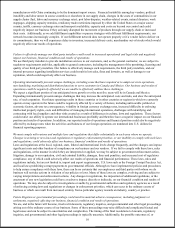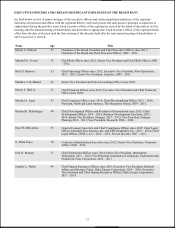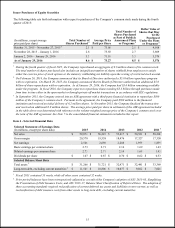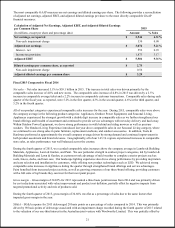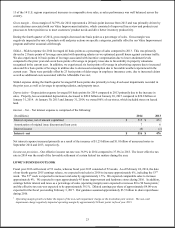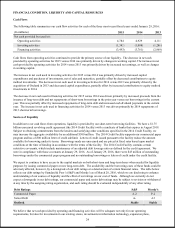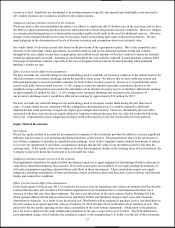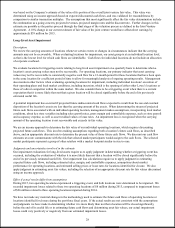Lowe's 2015 Annual Report Download - page 28
Download and view the complete annual report
Please find page 28 of the 2015 Lowe's annual report below. You can navigate through the pages in the report by either clicking on the pages listed below, or by using the keyword search tool below to find specific information within the annual report.
19
Other Metrics
2015
2014
2013
Comparable sales increase 2
4.8
%
4.3
%
4.8
%
Total customer transactions (in millions)
878
857
828
Average ticket 3
$
67.26
$
65.61
$
64.52
At end of year:
Number of stores
1,857
1,840
1,832
Sales floor square feet (in millions)
202
201
200
Average store size selling square feet (in thousands) 4
109
109
109
Return on average assets 5, 8
7.8
%
8.2
%
6.9
%
Return on average shareholders’ equity 6
28.8
%
24.4
%
17.7
%
Return on invested capital 7
14.1
%
13.9
%
11.5
%
1 EBIT margin, also referred to as operating margin, is defined as earnings before interest and taxes (EBIT) as a percentage of sales. EBIT
margin for fiscal year 2015 was adjusted to exclude the negative 90 basis points impact of the non-cash impairment charge on the
Australian joint venture with Woolworths (Adjusted EBIT margin). Adjusted EBIT is a non-GAAP financial measure. See below for
additional information and a reconciliation to the most comparable GAAP measure.
2 A comparable location is defined as a location that has been open longer than 13 months. A location that is identified for relocation is no
longer considered comparable one month prior to its relocation. The relocated location must then remain open longer than 13 months to
be considered comparable. A location we have decided to close is no longer considered comparable as of the beginning of the month in
which we announce its closing. Acquired locations are included in the comparable sales calculation beginning in the first full month
following the first anniversary of the date of the acquisition. Comparable sales include online sales, which did not have a meaningful
impact for the periods presented.
3 Average ticket is defined as net sales divided by the total number of customer transactions.
4 Average store size selling square feet is defined as sales floor square feet divided by the number of stores open at the end of the period.
The average Lowe’s home improvement store has approximately 112,000 square feet of retail selling space, while the average Orchard
store has approximately 37,000 square feet of retail selling space.
5 Return on average assets is defined as net earnings divided by average total assets for the last five quarters.
6 Return on average shareholders’ equity is defined as net earnings divided by average shareholders’ equity for the last five quarters.
7 Return on invested capital is a non-GAAP financial measure. See below for additional information and a reconciliation to the most
comparable GAAP measure.
8 Fiscal years 2014 and 2013 have been adjusted as a result of the Company’s retrospective adoption of ASU 2015-03, Simplifying the
Presentation of Debt Issuance Costs, and ASU 2015-17, Balance Sheet Classification of Deferred Taxes. The adoption of these accounting
standards required reclassification of current deferred tax assets and liabilities to non-current, as well as reclassification of debt issuance
costs from other assets to long-term debt, excluding current maturities.
Non-GAAP Financial Measures
Return on Invested Capital
We believe Return on Invested Capital (ROIC) is a meaningful metric for investors because it measures how effectively the
Company uses capital to generate profits.
We define ROIC as trailing four quarters’ net operating profit after tax divided by the average of ending debt and equity for the
last five quarters. Although ROIC is a common financial metric, numerous methods exist for calculating ROIC. Accordingly,
the method used by our management to calculate ROIC may differ from the methods other companies use to calculate their
ROIC. We encourage you to understand the methods used by another company to calculate its ROIC before comparing its
ROIC to ours.
We consider return on average debt and equity to be the financial measure computed in accordance with generally accepted
accounting principles that is the most directly comparable GAAP financial measure to ROIC. The difference between these
two measures is that ROIC adjusts net earnings to exclude tax adjusted interest expense.



